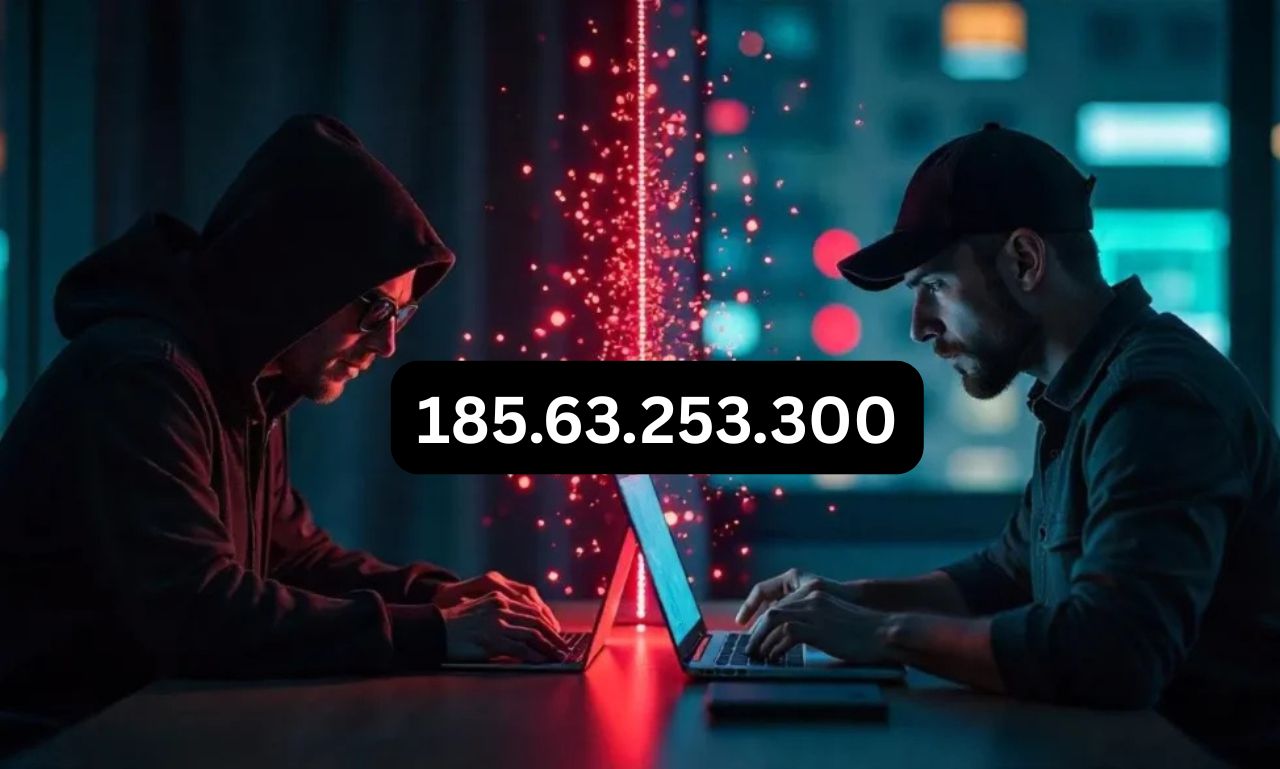Navigating the digital world can sometimes feel like wandering through a maze. One moment you’re smoothly browsing your favorite sites, and the next, you’re faced with an unexpected hurdle: an invalid IP address. Take 185.63.253.300 as an example—many might wonder what it signifies or why they encounter such issues while online.
In this blog post, we’ll unravel the mystery behind invalid IP addresses and explore how they impact your internet experience. Whether you’re a tech enthusiast or just someone looking to understand more about their connection woes, there’s something here for everyone. Let’s dive in!
What is 185.63.253.300?
185.63.253.300 is an example of an IP address that falls outside the valid range for IPv4 addresses. IP addresses serve as unique identifiers for devices connected to a network, allowing them to communicate effectively.
IPv4 addresses are formatted in four octets separated by dots, with each octet ranging from 0 to 255. Consequently, any number exceeding this limit renders it invalid.
In theory, if you encounter 185.63.253.300 while browsing or configuring your network settings, it’s essential to recognize that this string does not correspond to any active device on the internet.
Understanding what constitutes a valid IP address can help users troubleshoot connectivity issues and ensure seamless communication online.
The role of IP addresses in internet communication
IP addresses serve as the backbone of internet communication. They are unique identifiers for devices connected to a network, allowing them to send and receive data.
When you type a URL or click on a link, your device needs to know where to find the information. The IP address acts like an address on a letter, directing data packets efficiently across the web.
Without these addresses, sending emails or streaming videos would be chaotic. Devices wouldn’t know where to deliver content or how to communicate effectively with each other.
This system not only enables personal interactions but also supports vast networks and servers worldwide. It ensures that our online activities run smoothly and reliably every day.
In this interconnected landscape, understanding IP addresses is essential for troubleshooting connectivity issues and enhancing overall performance.
Understanding the format of a valid IP address
IP addresses follow a specific format that is crucial for ensuring effective communication over the internet. The most common type, IPv4, consists of four groups of numbers separated by periods. Each group can range from 0 to 255.
For instance, an address like 192.168.1.1 fits this structure perfectly. This formatting helps devices identify and communicate with each other on networks without confusion.
IPv6 offers another layer of complexity with eight groups of hexadecimal digits, separated by colons. It was introduced to accommodate the growing number of devices online.
Understanding these formats is key when troubleshooting connectivity issues or configuring network settings. Recognizing valid patterns allows users to spot potential errors quickly, keeping their online experience smooth and uninterrupted.
Possible causes of encountering an invalid IP address
Encountering an invalid IP address can stem from several issues. One common cause is human error during configuration. A simple typo when entering the address can lead to problems.
Network misconfigurations also play a significant role. This includes incorrect subnet masks or gateway settings that disrupt communication between devices and servers.
Another possibility involves device malfunctions or outdated firmware, which may prevent proper recognition of valid addresses within your network.
Moreover, if you’re using dynamic IP addressing and there’s a lease expiration without renewal, your device might end up with an invalid address temporarily.
Security protocols could block access to certain IPs for protection against malicious activities. All these factors contribute to the frustrating experience of encountering an invalid IP address in daily internet usage.
What is an IP address and how does it work?
An IP address, or Internet Protocol address, is a unique identifier assigned to each device connected to the internet. Think of it as a digital home address that allows devices to communicate with one another.
When you browse websites or send emails, your device uses its IP address to send and receive information. This process involves packets of data traveling through various networks until they reach their destination.
There are two main types of IP addresses: IPv4 and IPv6. IPv4 consists of four sets of numbers separated by periods, while IPv6 uses alphanumeric characters for more extensive addressing capabilities.
Each time you connect online, your device may be assigned a dynamic IP address that can change over time. Static addresses remain constant and are often used for servers hosting websites or applications requiring consistent access.
Impact on internet connectivity and browsing experience
An invalid IP address can disrupt your entire online experience. When you encounter an issue like 185.63.253.300, it often leads to connectivity problems.
Websites may fail to load or respond slowly, leaving users frustrated. This disruption affects everything from streaming videos to browsing social media platforms.
Moreover, businesses relying on online transactions face significant setbacks as customers struggle with access issues. This not only hampers user satisfaction but also impacts revenue.
Additionally, an invalid IP can cause security concerns; unauthorized access attempts might go unnoticed if systems are down or misconfigured.
In a digital world where connectivity is paramount, any hiccup caused by an invalid IP creates ripples that affect both casual surfers and dedicated professionals alike. The balance of seamless internet interaction hinges heavily on the validity of these essential identifiers.
How to troubleshoot and fix issues with invalid IPs
When you encounter an invalid IP address like 185.63.253.300, the first step is to check your device settings. Ensure that your network configuration is set correctly for automatic IP assignment if you’re using DHCP.
Next, restart your router and modem. Power cycling these devices can often resolve connectivity issues and refresh assigned IP addresses.
If problems persist, manually configure your device’s IP settings. Use a valid address from the respective subnet range of your network to avoid conflicts.
Running diagnostic tools on your operating system can also help pinpoint the issue more precisely. These tools provide insights into potential misconfigurations or hardware failures.
Don’t hesitate to contact your Internet Service Provider (ISP). They can assist with identifying broader network issues that may be affecting connectivity within their infrastructure.
Importance of maintaining accurate and valid IP addresses for smooth internet usage
Maintaining accurate and valid IP addresses is crucial for seamless internet connectivity. An incorrect IP can lead to frustrating delays or complete disconnection from networks.
Every device connected to the internet relies on a unique address. When these addresses are misconfigured, it disrupts communication between devices. This means websites may not load properly, resulting in wasted time and effort.
Furthermore, invalid IPs can pose security risks. They might expose your network to unauthorized access or data breaches. Keeping your IP addresses updated helps prevent such vulnerabilities.
Accurate addressing also enhances performance for applications requiring real-time data transfer, like video conferencing and online gaming. Smooth streaming experiences depend on reliable connections that stem from proper IP management.
In essence, regularly checking and maintaining your network’s IP configurations fosters a stable online environment conducive to productivity and enjoyment.
Conclusion
Encountering an invalid IP address like 185.63.253.300 can be frustrating. Understanding the structure and significance of IP addresses is crucial for smooth internet access. When issues arise, knowing how to troubleshoot and fix these problems can save time and maintain a seamless online experience.
Ensuring that your network operates with valid IP addresses contributes greatly to efficient communication on the internet. By keeping track of potential errors or misconfigurations, users can avoid unnecessary disruptions in connectivity.
Staying informed about the intricacies of IP addresses empowers individuals to navigate their digital environments more effectively, promoting better browsing experiences overall.

